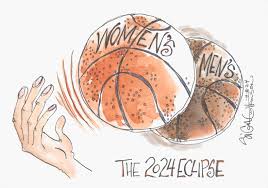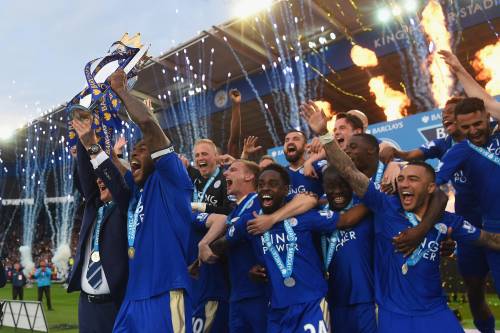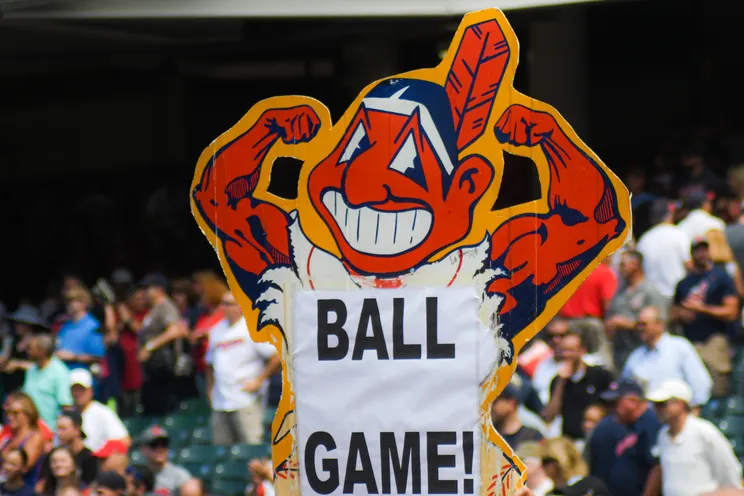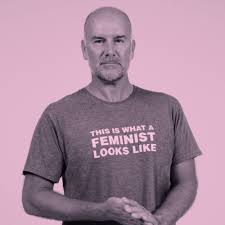1
Section One: The Fundamentals
A) What do we know about sport? What are common assumptions we make about sport and society?
| While sports can certainly promote teamwork and unity for some, it is clear that this is not the case for everyone. Most team sports have 15 players or more on the team, which can create conflicting dynamics between teammates. This occurs because people enter a team with different beliefs, values and physical skill levels. A majority of individuals on a team may value winning over a fun and interactive atmosphere. The players who value positive teammate interactions and enjoying their sport, will most likely not contact with the rest of the group, creating a lack of teamwork and unity. It also comes down to the coaches who are operating the team. From my personal experience, it seems that coaches typically apply favouritism to players they have known for awhile. So for newer players they don’t gain as much attention or support from the coach which sets the precedent that don’t belong to the team as much as the other players. Whether this type of player-coach interaction is intentional or not, it still damaging to the confidence and willingness for players to integrate themselves into a group to receive the benefits of teamwork and unity.
One of my peers noted that sport can destroy an individuals confidence due to a negative body image or constant pressure. Growing up playing hockey, I didn’t really see people struggling with body image considering a lot of equipment covered up the body. However, upon reflection, a sport like gymnastics can be extremely vulnerable for both males and females which can create personal concerns for body image even if the individual is performing well. |
Exercise 3: Notebook prompt
What are some other metanarratives about sport that you are familiar with? Find an image or video clip or draw something yourself that captures this idea…
So what? Why does any of this matter? Does it matter? As something we grow up with – live with – play through – we don’t often interrogate the meanings of sport, and perhaps we don’t want to.
But being aware of these assumptions and metanarratives is especially important, I would argue, because of the centrality of sport to our everyday lives, the role that sport plays in shaping our childhood and worldviews and….. [finish that thought]
| A metanarrative about sports that I am familiar with is the underdog story. This narrative portrays the idea that individuals and groups can overcome immense odds against them, reinforcing the idea that hard work and determination can lead to success. When real-life examples of underdog stories happen (like Leicester City, see image below), the media typically provides a lot of attention to the story. This provides a constant reminder to people, not to count themselves or their team out. Without the widespread media attention, the message and lessons associated with underdog stories would not be as prevalent.
The metanarratives around sport provide us with more than just entertainment, they shape how we think and behave in specific situations and societies. When individuals compete and watch sports they can learn how to collaborate with people and function as a team to achieve a common goal. Therefore, these narratives do matter because they create a deeper connection between the individual and sport by teaching useful life lessons such as effort and determination. These lessons can be utilized in other aspects of life whether it is maintaining an important relationship or succeeding at a job.
… societal values, demonstrate that sport is not just a pastime or form of entertainment, it is a component of society that displays valuable life lessons.
I have added a photo of the Leicester City soccer team celebrating the English Premier League Championship. They embody what being an underdog means because at the start of the season the odds were 5000/1 against them, but they ultimately persevered against all odds to win it all.
|
B) What is social justice?
Exercise 4: Padlet Prompt
Think back to the last section and try to look at some of the ideas we discussed differently. How might sport and social justice actually co-exist?
Record any images, video clips, or gifs you added to the padlet and identify a point of intersection between sport and social justice (can be an issue or a barrier or a debate or something you would like to explore in more depth in this course) . Screenshot or paste in your response below.
|
Throughout sports, a main issue with representation is centred around the Indigenous community. Many professional teams have used Indigenous figures as the basis for their team’s brand, logo and overall image. For example, the Cleveland Indians (now known as the Guardians), the Washington Redskins (now known as the Commanders) and the Chicago Blackhawks. As mentioned, both Cleveland and Washington have recently changed their names so that they no longer display Indigenous figures as their primary logo or brand. It seems that throughout professional sports, most teams are named after animals, weather events or objects. However, the minimal teams that were named after people ended up being indigenous. This is where the issue lies with indigenous representation in sport because these logos and names are spreading stereotypes about the indigenous culture and community. While some names have changed, there is a still a lot of history attached to the indigenous based names, drawing attention to the stereotypes that were consequently displayed. As John Lewis described social justice, it is a “communal effort dedicated to creating and sustaining a fair and equal society” (John Lewis Institute for Social Justice). Ultimately, the use of indigenous figures for names and logos will always prevent social justice in sport to fully take form due to the history associated with those teams.
https://www.ccsu.edu/john-lewis-institute-social-justice/our-definition-social-justice
|
C) Social Justice Reading
(note: this activity is optional!)
D) KINESIOLOGY AND SOCIAL JUSTICE
Exercise 5:
Exercise 6:
What are the implications of bodies-at-risk discourse and the refusal to understand the health gap from a social justice perspective, according to the authors of this article?
| According to the authors, the bodies-at-risk discourse is harmful because it re-claims race in negative terms (Harrison et al., 2021). This means that whiteness remains the norm and the truth in society, by pushing dominant values geared toward the white population. These values further generate the refusal to understand the health gap, causing less research in this area. Less attention to the health gap produces more dangerous narratives of whiteness, increasing black inferiority. Ultimately, this creates a society where social justice is required because as the article mentions “the need for social justice is predicated on the presence of oppression” (Harrison et al., 2021). This demonstrates that as the health gap continues to be neglected, oppression toward Hispanics, Asians and African Americans will only expand.
Based on the article, social justice is becoming more prevalent in research which shows that an improved awareness of the health gap is expected (Harrison et al., 2021). Nonetheless, in the world of kinesiology and public health, there is still much more work to do in terms of research that is centered around the concept of social justice. The research would provide a greater understanding of the actions that need to be taken within the field to minimize the health gap. However, in the meantime, the implications of bodies-at-risk discourse and the refusal to understand the health gap that is currently increasing black inferiority will likely remain an issue.
Harrison Jr, L., Azzarito, L., & Hodge, S. (2021). Social Justice in Kinesiology, Health, and Disability. Quest, 73(3), 225-244. https://doi.org/10.1080/00336297.2021.1944231
|
Section Two: Sport Feminism
Exercise 7: Notebook Prompt
What is feminism? What does it mean to you? Choose one of the images below and explain how it captures your understanding of feminism (or find one that does speak to you and paste this into your pressbook with an explanation of why it matters to you.
| Feminism is a movement and philosophy that aims to provide equality for all genders while focusing on breaking down the barriers that affect and marginalize women. To me, it means inclusion toward everyone a part of our societies and communities by challenging norms and creating a safe atmosphere for everyone to participate. Important topics within feminism are reducing poverty by decreasing the gender wage gap, challenging harmful cultural norms against women, and providing women with enhanced opportunities for education around the world. These topics are important because when large issues are in the process of being resolved, it means that everyone around the world is receiving some form of help. Whether it is equal pay or simply more confidence within their society, everyone will benefit when movements like feminism work together to tackle important societal problems.
This photo captures my understanding of feminism because it extends beyond just the female gender by having a male display his support for the movement. The male figure represents the idea of the challenging norm that I talked about above. Normally people see feminists as females who are using their voices to enact change, however, this image of a calm older male adult goes beyond the original perception of a feminist. In my opinion, it is important to focus on the message or goal that an individual or group is attempting to promote, rather than fixating on what the individual looks like, which is exactly what this image represents for me.
|
Exercise 8: Notes Prompt (optional)
The different kinds of feminism that the authors present is liberal, black, radical, and Marxist/socialist feminism (Scraton & Flintoff, 2013). To start, liberalism feminism is focused on equality and individual rights for the inclusion of women in sports, which is very male-dominated. Black feminism demonstrates how gender, race and class creates unique forms of oppression for black women in sport. Over the history of sport black women seemed to have been excluded and made largely invisible. Radical feminism aims to challenge the power structures of sport where typically we see males in high-level positions within sport leagues or teams, women are often subjected to less of a voice in the sporting world. Socialist feminism focus on the relationship between gender and labour, where we currently see men making far more income in sports compared to women. The gender wage gap is a large issue that has been a battle for years.
Scraton, S., & Flintoff, A. (2013). Gender, Feminist Theory, and Sport. In A Companion to Sport, 96-111. https://doi.org/10.1002/9781118325261.ch5.
NB: Cornell notes is a great resource that teaches effective notetaking. Unfortunately, our system can’t save notes taken in the H5P app, so this is fully optional.
Exercise 9: Crossword Activity
Exercise 10: Padlet Prompt
|
Queer theory focuses on how societal norms shape our understanding of gender and sexuality. It provides an appreciation of how the definitions of gender and sexuality can create power structures. In sports, it challenges how sports culture reinforces traditional norms about both sexuality and gender. As mentioned in the article it brings “a deconstructive approach to sexual identity” (Scraton & Flintoff, 2013). Therefore, it is pushing for a space within sports that is more inclusive and diverse. Scraton, S., & Flintoff, A. (2013). Gender, Feminist Theory, and Sport. In A Companion to Sport, 96-111. https://doi.org/10.1002/9781118325261.ch5.
|

| Based on the success of the new women’s hockey league in North America and the popularity of female athletes like Angel Reese and Caitlin Clark, the landscape is really changing. As we have seen with male athletes, it seems like the skill level across all sports is increasing. The same can be said for women’s athletes as well, which is why I think people do care about women’s sports. The higher the skill, the more entertaining the game, which is why people are tuning in. I also think the current professional women’s sports leagues are doing a much better job marketing their products and purposely reaching their intended audience. The leagues are using their popular athletes like Clark and Reese to further push up their revenue. I feel like it all comes back to social media, the more attention female athletes direct toward themselves to build a brand and gather large sponsorships, the more these leagues will benefit because they are the ones responsible for displaying the talent.
|




